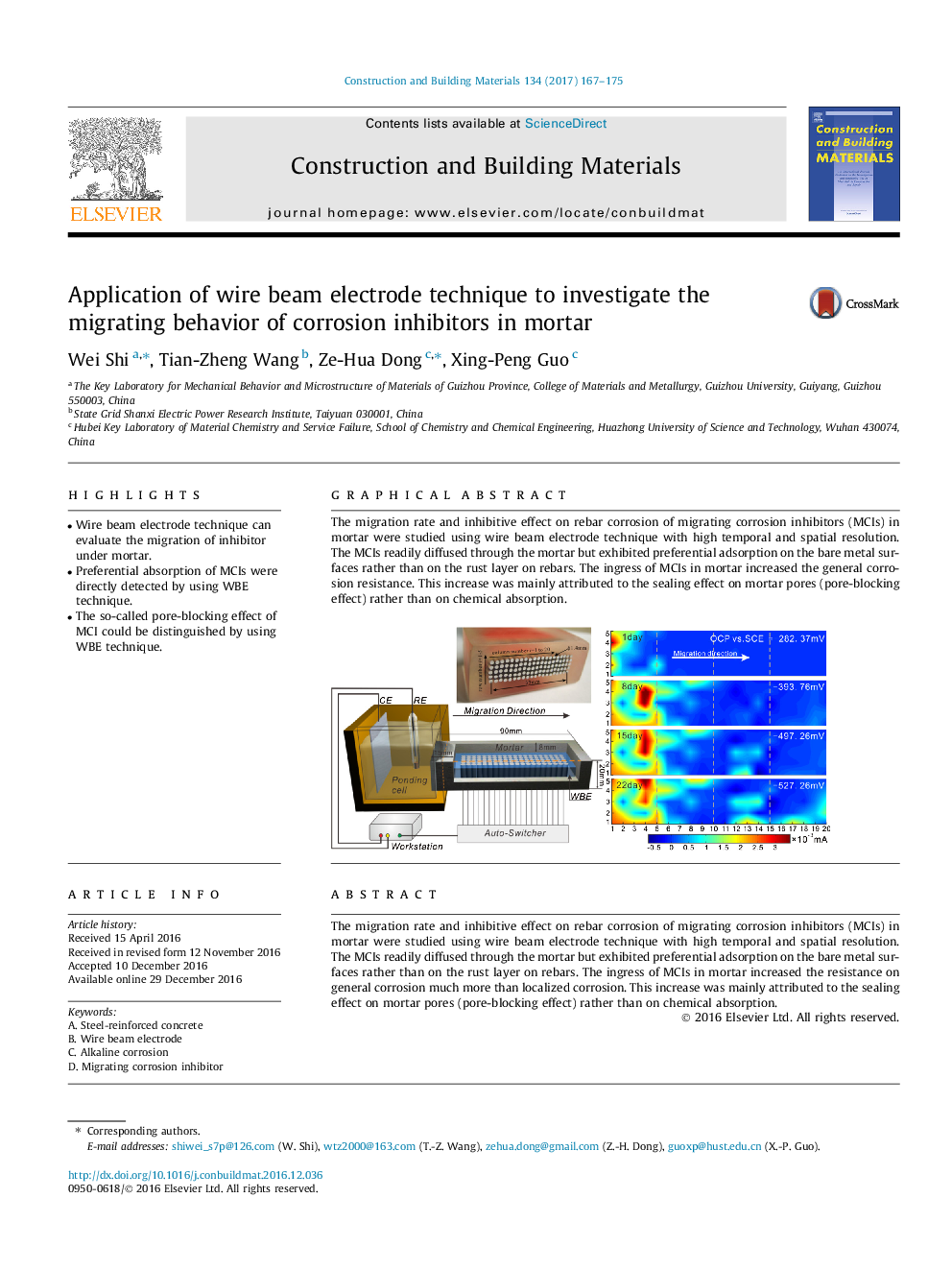| Article ID | Journal | Published Year | Pages | File Type |
|---|---|---|---|---|
| 6480789 | Construction and Building Materials | 2017 | 9 Pages |
â¢Wire beam electrode technique can evaluate the migration of inhibitor under mortar.â¢Preferential absorption of MCIs were directly detected by using WBE technique.â¢The so-called pore-blocking effect of MCI could be distinguished by using WBE technique.
The migration rate and inhibitive effect on rebar corrosion of migrating corrosion inhibitors (MCIs) in mortar were studied using wire beam electrode technique with high temporal and spatial resolution. The MCIs readily diffused through the mortar but exhibited preferential adsorption on the bare metal surfaces rather than on the rust layer on rebars. The ingress of MCIs in mortar increased the resistance on general corrosion much more than localized corrosion. This increase was mainly attributed to the sealing effect on mortar pores (pore-blocking effect) rather than on chemical absorption.
Graphical abstractThe migration rate and inhibitive effect on rebar corrosion of migrating corrosion inhibitors (MCIs) in mortar were studied using wire beam electrode technique with high temporal and spatial resolution. The MCIs readily diffused through the mortar but exhibited preferential adsorption on the bare metal surfaces rather than on the rust layer on rebars. The ingress of MCIs in mortar increased the general corrosion resistance. This increase was mainly attributed to the sealing effect on mortar pores (pore-blocking effect) rather than on chemical absorption.Download high-res image (137KB)Download full-size image
